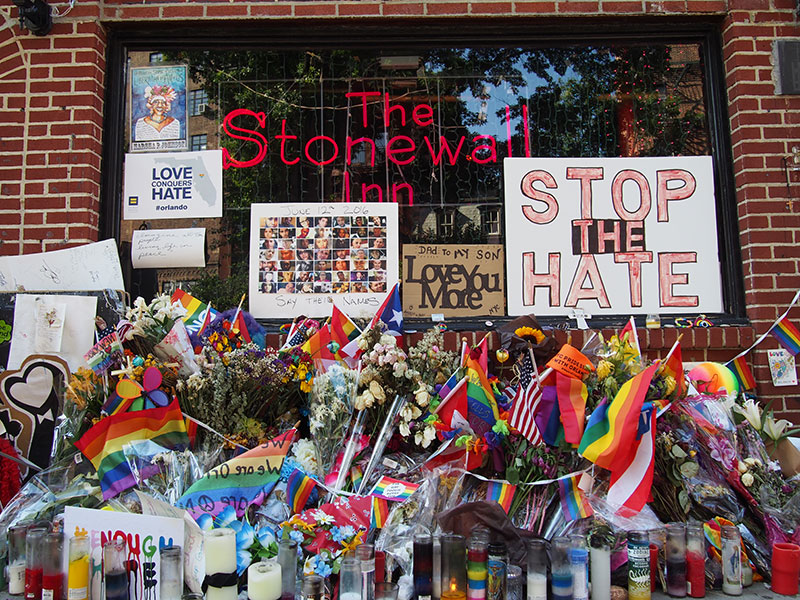The importance of recording queer history

A memorial for the 2016 Orlando nightclub shooting covers the exterior of the Stonewall Inn, New York
In the wake of incidents such as the Orlando nightclub shooting in June 2016, it is evident that the LGBTQ community’s global presence is still far from safe. Hate crimes, however, are only one aspect of queer history: behind their horror stands a legacy of activism and pride in the variety of sexual orientation and gender identity in existence. Travelling through North America in August 2016, I set out to explore the different ways that the history of the community has been recorded, and examine how each can contribute to building on the work of our predecessors.
An obvious reason why documentation is important is to reinforce an understanding of the diversity of human experience. One example is the Stonewall Inn in New York City; in June 2016 it was made a national monument, and is the first national monument in America to be dedicated to LGBTQ rights and history. It commemorates the site of the Stonewall riots of 1969, considered by many to be the birthplace of the modern LGBTQ rights movement in the United States, and serves as a reminder that the liberation movement is a part of the national history. Apart from its historic meaning, it also demonstrates geographic significance, symbolising the fact that queer people visibly exist in society.
Cataloguing queer history outlines the distance covered in the fight for human rights. An instance of this is San Francisco’s GLBT History Museum, which has exhibitions covering local youth activist groups from the 1970s to the assassination of Harvey Milk. Other topics presented, such as the evolution of local ‘gaybourhoods’, reminded viewers of the dangers of gentrification in large cities that used to boast sizeable social hubs for the LGBTQ community. This discussion prompted thought as to the design attributes of new, 21st century queer spaces, where increasingly values such as inclusivity and accessibility are being prioritised.
The act of recording also signifies the need to establish a place in the historical canon, and promotes scholarship. Established collections such as the ONE National Gay and Lesbian Archives in Los Angeles hold tens of thousands of materials from books and periodicals to films, artwork, and newspaper clippings. Its vast range allows it to curate public exhibitions regularly, encouraging the use of the archives for education and research. Canada’s University of Victoria opened their Transgender Archives in 2011 which, aside from being the largest globally, is now also home to the first endowed academic chair of transgender studies in the world.
Crucial to these methods of recognising and celebrating queer history is their accessibility. Having free or public displays are essential to allowing all people – not just those with means – to learn and share this history. Additionally, independent research is often seen as an announcement of sexual or gender identity, which may be unwarranted or even dangerously overt. Installations such as Chicago’s Legacy Walk provide public monuments which serve to educate and memorialise important figures from LGBTQ history, including those such as the Two Spirit people, to recognise Indigenous members of the community whose stories have been neglected from the more mainstream history of the movement. These initiatives help to normalise the idea that queer history is relevant to everyone.
Photo credit: Rhododendrites
The North America Travel Scholarship is supported through Exeter College’s Annual Fund, thanks to the generosity of donors.
